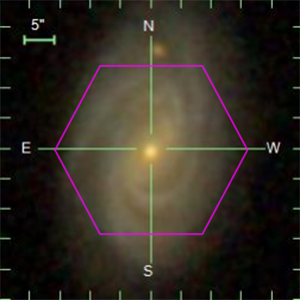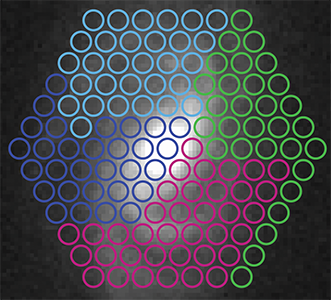MaNGA Overview
MaNGA is the newest survey component of the Sloan Digital Sky Survey. Its goal is to map the detailed composition and kinematic structure of 10,000 nearby galaxies. MaNGA uses integral field unit (IFU) spectroscopy to measure spectra for hundreds of points within each galaxy. For a general introduction to MaNGA, see the MaNGA survey page on this site.


MaNGA Data
DR13 Scope and Status
DR13 includes data for 1,390 MaNGA galaxies (of which 1,351 are unique and 39 are repeats) and associated spectrophotometric calibration stars.
MaNGA data are available for the first time in Data Release 13. The MaNGA data now available consist of the raw data from the first year of the survey, the intermediate data reduction pipeline (DRP) products, and the composite DRP data cubes. In addition, there is a summary ‘drpall’ table summarizing the names, locations, redshifts, data quality, etc. of all MaNGA targets. See the Data Access section below for more information.
For more detailed information on the MaNGA survey in DR13, see the list of links on this page.
Future Data
DR13 is the first spectroscopic release for MaNGA. Future data releases will include not only more data cubes of galaxies that are currently being observed, but will also contain derived data products such as maps of emission line fluxes, gas and stellar kinematics, stellar population properties, etc.
In addition, MaNGA has also started a bright-time observing program, piggy-backing on APOGEE-2, to build a stellar library. These reduced stellar spectra will be included in a future data release.
Data Access
Several interfaces are available to access the data (see MaNGA Data Access for more details).
Science Archive Server (SAS)
MaNGA data cubes, row-stacked spectra, and the drpall summary table are available as FITS files through the Science Archive Server (SAS), which can return FITS spectra either individually or in bulk. For more information on retrieving MaNGA data from the SAS, see MaNGA Data Access .
CasJobs
You can search for MaNGA data within the drpall summary table more flexibly with the CasJobs data access tool. With CasJobs, you can submit large queries that run for up to 8 hours and can return millions of objects. You can save results into a personal MyDB database for later analysis.
MaNGA data are part of the DR13 context – don’t forget to change to the DR13 context when you want to find MaNGA data. MaNGA summary data are in the mangaDrpAll table, and targeting data are available in the mangatarget table.
SkyServer
Information for individual MaNGA targets are now shown in the SkyServer Explore tool, such as for this sample MaNGA target galaxy. The SkyServer site includes direct links to the MaNGA data cubes stored on the SAS.
You can search for MaNGA data using Structured Query Language (SQL) with the SkyServer SQL Search tool. MaNGA summary data are in the mangaDrpAll table, and targeting data are available in the mangatarget table.





